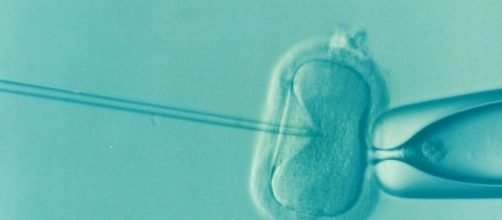Following the birth of the first “Three-parent baby” last year, scientists were alarmed about the potential impact of this controversial procedure. As it is currently unapproved in the United States, the Food and Drug Administration (FDA) is calling for Dr. John Zhang to stop the promotion or advertisement of such an experimental technique.
Zhang, the lead fertility doctor at New Hope Fertility Clinic in New York, rose to fame when he used the “three-parent baby” procedure last year to help a Jordanian couple to have a son. The technique reportedly combines the DNA from three people — the mother, the father and an egg donor.
.@VarditRavitsky #ICYMI $100,000 to help forty-somethings get pregnant.https://t.co/vTVJpUVw4D #fertility #threeparentbaby #reproethics
— Jean-C Bélisle-Pipon (@BelislePipon) June 14, 2017
No commercialization
The procedure is reportedly banned in the U.S. As a matter of fact, the Congress has prohibited the FDA from reviewing the proposals to conduct the experimental procedure. That is why the bureau is warning Zhang, who vowed not to use the procedure in America again without permission.
Unfortunately, Zhang, who also heads a fertility-related company known as Darwin Life Inc., seemed to have failed to stop the marketing claims of his company's website. where he continued to advertise the procedure by calling it HER IVF (Human Egg Rejuvenation In Vitro Fertilization).
The claims include the “first live birth” using the “three-parent baby” technology, as well as the “first proven treatment” for specific genetic diseases and successful treatment of “age-related” infertility.
Even though the procedure aims to avoid certain life-threatening and incurable genetic or metabolic disorders, the FDA has not allowed any clinical research or experiments to be conducted on people. So without clinical trials, it is impossible for experts to determine the risks and benefits of the procedure and if it is really effective in preventing the passing of a genetic disorder to an offspring. Therefore, it is illegal for Zhang and his companies to promote the technique.
‘Three-parent baby’ technique
So, how does the “three-parent baby” procedure work? According to Washington Post, the controversial technique encompasses the removal of the mother’s healthy DNA from the egg, while leaving behind the disease-carrying gene.
The healthy DNA is then injected into the donor’s egg for fertilization. This means that the baby inherits the DNA from both parents, as well as the egg donor although the DNA contribution is just minimal.
Meanwhile, the procedure is reportedly not considered illegal in Mexico. In the United Kingdom, on the other hand, the government has approved a similar technique. The UK technique should only be used to prevent offspring from inheriting a genetic disorder and not as a solution to age-related infertility, the Center for Genetics and Society executive director, Marcy Darnovsky stressed.
Earlier this year, doctors were given the go-ahead to start performing “#threeparentbaby” fertility treatments in... https://t.co/udwiFxhePm
— Fertility Academy (@fertilitygynae) June 20, 2017
The risks
Darnovsky also underscored the fact that the procedure is very risky and “biologically extreme.” In fact, it remains uncertain if the child’s health will be changed by the traces of mitochondrial DNA from the mother. i
The traces of the mother’s mitochondrial DNA could apparently cause the improper functioning of some of the child’s mitochondria. The percentage of affected mitochondria also differs between tissues. In addition, clinical trials in mice showed that the combinations of mitochondria can lead to metabolic conditions and neurological disorders.


